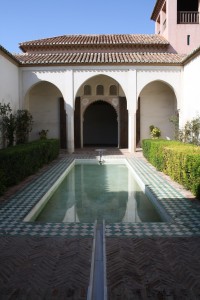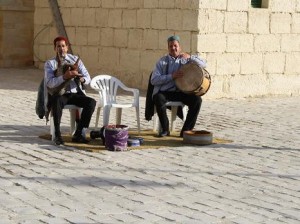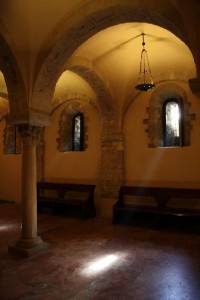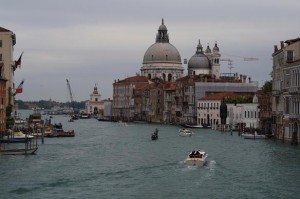Drinking Cultures from Around the Globe
 There is something very strange about the way humans approach booze, and how each nation address alcohol both politically and culturally in extremely unique ways. For example, in America we make it illegal for anyone under 21 to buy alcohol. However, when you do reach that age there is a massive party wherein your first introduction to the drink is compounded by the fact that everyone you know comes out to the bar to get you intoxicated. It is a right of passage, a coming of age ritual and a test of one’s man or womanhood. After that fateful night, drinking in America takes on a purely social atmosphere, and no real gathering is complete without it and every gathering with liquor is somewhat more casual because of the addition. Our time in Europe showed the same to be true, though with a bit less of an adherence to drinking ages. Not so elsewhere.
There is something very strange about the way humans approach booze, and how each nation address alcohol both politically and culturally in extremely unique ways. For example, in America we make it illegal for anyone under 21 to buy alcohol. However, when you do reach that age there is a massive party wherein your first introduction to the drink is compounded by the fact that everyone you know comes out to the bar to get you intoxicated. It is a right of passage, a coming of age ritual and a test of one’s man or womanhood. After that fateful night, drinking in America takes on a purely social atmosphere, and no real gathering is complete without it and every gathering with liquor is somewhat more casual because of the addition. Our time in Europe showed the same to be true, though with a bit less of an adherence to drinking ages. Not so elsewhere.
In China, where we’ve spent quite a bit of time, there seems to be no legal age (although officially it is 18-19). You can often find youths drinking at the bars who appear to be quite young. And in fact no one is ever ‘carded’ in China. Contrary to what most people might assume, this does not breed an atmosphere ripe for degradation. Chinese youths hardly ever take their lax drinking rules for granted, nor do they abuse the booze at a young age, as would be expected if we suddenly made the drinking age 18 in the USA. There is, however, a similar ‘right of passage’ for most Chinese males that involves alcohol. At banquets (which are the preferred method of congregation) everyone sits around a round table, and the person of honor goes around the table and does a small glass of beer or rice wine with every guest. This makes the guest of honor extremely drunk, and this is something to be quite proud of and admired (on special occasions, only). This often prompts Chinese men to approach Mike and ask, “How many beers can you drink?” Which, of course, Mike did not know the answer to at first. Now it appears this is a staple of maleness, though I cannot stress enough that it seems to happen only in large groups. By the way, the Chinese way of saying ‘cheers’ is “gan-bei” which literally means ’empty glass’ or ‘bottoms up.’ which they take literally when drinking beer. Another interesting bit of drinking culture in China– the person of more status should always have their glass slightly higher when clinking it with someone glasses. So, if you are not the guest of honor, your goal is to touch the top of your glass with the bottom of theirs. This results in fun games where people try to show honor to each other by putting their glasses lower. I saw one group of men putting their glasses on the floor to clink them, showing no one was higher than the other. Here is an example from a Chinese TV show:
In Central Asia we found drinking to be somewhat deplorable. Even worse than a man drinking is a woman drinking, and on the rare occasions I ordered a beer in public I could sense eyes judging me. However, we did notice quite a few drunk people on the streets at night, which means it is an underbelly sort of activity reserved for underbelly types. This obviously wasn’t the case in the major cities we visited in Kazakhstan, Uzbekistan and Turkmenistan, but definitely in smaller towns drinking seemed to be a big no-no!
 In Mongolia, drinking is a large part of life. We stayed with a family in their ger for three days and nights, and the husband attempted to get us intoxicated on a nightly basis. He would drink after dinner and smoke Pal Mall unfiltered outside his ger as he looked up at the stars. This cowboy lifestyle works well for them and they are extremely happy. Meanwhile, their drinking culture is very inclusive, they pull in everyone and the goal is to have as much fun as possible. There was little segregation because of my gender, and contrary to what I assumed, they welcomed me into their poker game almost immediately. When we left to get on the bus on our final day, our host bought us a round of beers which we all chugged before climbing aboard for a 3 hour ride (big mistake!). Alcohol is used as a social tool to make people happy, include more people into the gathering, and draw everyone into one ger for warmth, entertainment (no TVs out on the steppe) and hours of story telling and card playing.
In Mongolia, drinking is a large part of life. We stayed with a family in their ger for three days and nights, and the husband attempted to get us intoxicated on a nightly basis. He would drink after dinner and smoke Pal Mall unfiltered outside his ger as he looked up at the stars. This cowboy lifestyle works well for them and they are extremely happy. Meanwhile, their drinking culture is very inclusive, they pull in everyone and the goal is to have as much fun as possible. There was little segregation because of my gender, and contrary to what I assumed, they welcomed me into their poker game almost immediately. When we left to get on the bus on our final day, our host bought us a round of beers which we all chugged before climbing aboard for a 3 hour ride (big mistake!). Alcohol is used as a social tool to make people happy, include more people into the gathering, and draw everyone into one ger for warmth, entertainment (no TVs out on the steppe) and hours of story telling and card playing.
We’re not experts on these cultures or their drinking habits, but that is what we observed while traveling around from place to place and trying to experience these cultures in the ways they exist when no one is watching.




